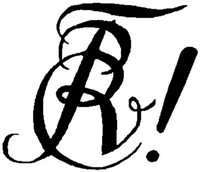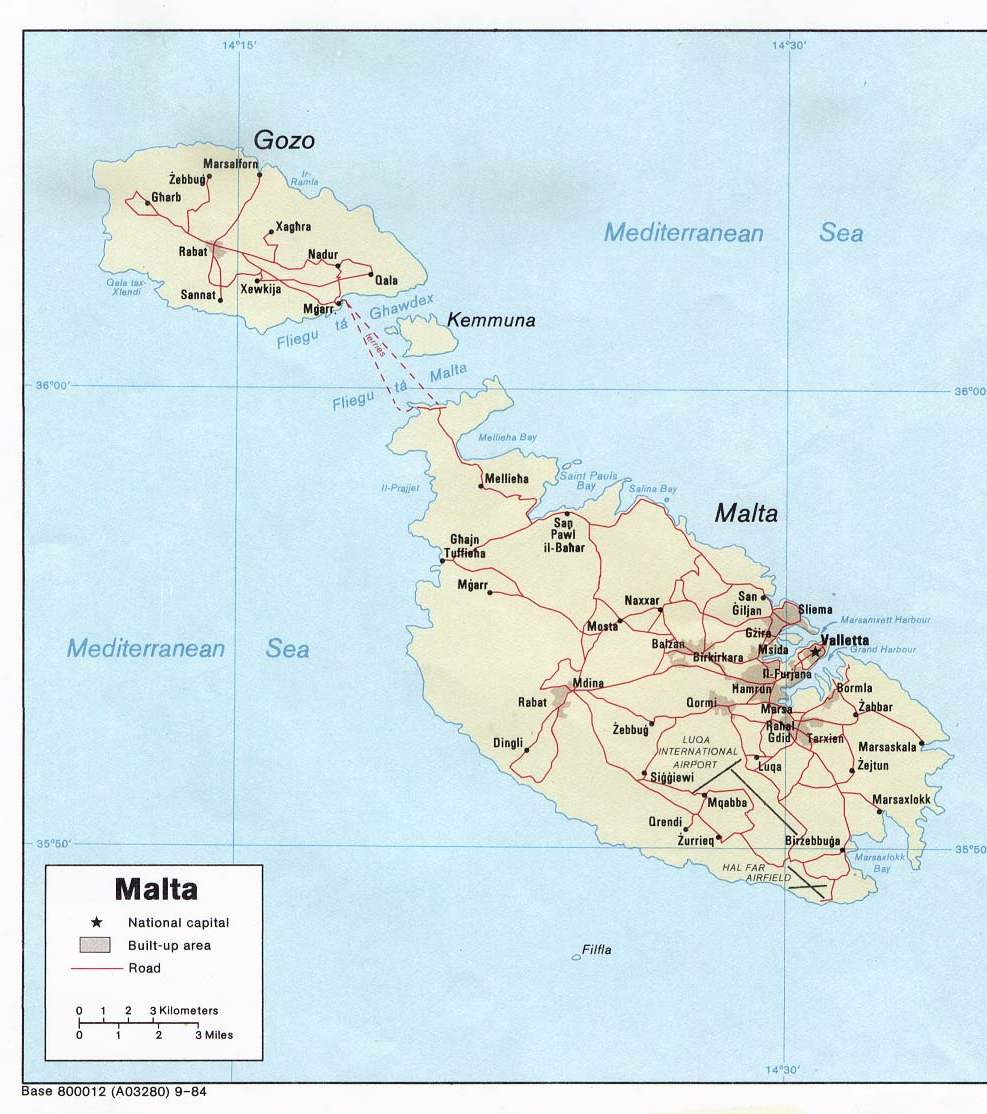|
Midalja Għall-Qadi Tar-Repubblika
The Midalja għall-Qadi tar-Repubblika (Medal for Service to the Republic) is a medal of the Republic of Malta. The medal is awarded by the President of Malta, with the written approval of the Prime Minister of Malta, for distinguished service to Malta. The award is presented to Maltese citizens and organizations, but may be awarded to foreigners on an honorary basis for service which merits recognition. No more than ten Maltese citizens may be awarded the medal over the course of a year. The medal may be awarded posthumously. Recipients of the medal are entitled to use the post-nominal M.Q.R. Appearance The Midalja għall-Qadi tar-Repubblika is a five-pointed white enamel star wide with beveled rays between the arms of the star. The obverse bears the Coat of Arms of Malta on a gold colored metal disc superimposed over the star. The top point of the star bears the inscription ''1975'' in gold. The reverse depicts, in relief, a map of the Maltese Islands. The map is surrounded by ... [...More Info...] [...Related Items...] OR: [Wikipedia] [Google] [Baidu] |
President Of Malta
The president of Malta () is the constitutional head of state of Malta. The president is indirect election, indirectly elected by the House of Representatives of Malta, which appoints the president for a five-year term and requires them to swear an oath to "preserve, protect and defend" the Constitution. The president of Malta also resides directly or indirectly in all three branches of the state. They are part of Parliament and responsible for the appointment of the judiciary. Executive authority is nominally vested in the president, but is in practice exercised by the Prime Minister of Malta, prime minister. Establishment of office The office of the president of Malta () came into being on 13 December 1974, when Malta became a republics in the Commonwealth of Nations, republic within the Commonwealth of Nations. Queen Elizabeth II ceased to be head of state and Queen of Malta (), and the last Governor-General of Malta, governor-general, Sir Anthony Mamo, became the first pre ... [...More Info...] [...Related Items...] OR: [Wikipedia] [Google] [Baidu] |
Midalja Għall-Qlubija
The Medal for Bravery (Midalja għall-Qlubija) is an official honor of the Republic of Malta. It is awarded by the President of Malta, with the written approval of the Prime Minister of Malta, to individuals who have performed exceptional acts of bravery. The award is primarily presented to Maltese citizens but may be awarded to foreigners on an honorary basis for acts which merit recognition by Malta. The medal may be awarded posthumously. Recipients of the medal are entitled to use the post-nominal M.R.Q. Appearance The Medal for Bravery is a silver medal in diameter. In the first type, the obverse bears the Coat of Arms of Malta used between 1975 and 1988 superimposed over a 48 ray sunburst design. The second type changed the emblem for the Coat of Arms of Malta in 1988. The reverse depicts, in relief, a map of the Maltese Islands. The map is surrounded by a wreath. Below the wreath is the inscription ''Għall-Qlubija'' (For Bravery). Like the obverse, the reverse is also supe ... [...More Info...] [...Related Items...] OR: [Wikipedia] [Google] [Baidu] |
Malta
Malta, officially the Republic of Malta, is an island country in Southern Europe located in the Mediterranean Sea, between Sicily and North Africa. It consists of an archipelago south of Italy, east of Tunisia, and north of Libya. The two official languages are Maltese language, Maltese and English language, English. The country's capital is Valletta, which is the smallest capital city in the EU by both area and population. It was also the first World Heritage Site, World Heritage City in Europe to become a European Capital of Culture in 2018. With a population of about 542,000 over an area of , Malta is the world's List of countries and dependencies by area, tenth-smallest country by area and the List of countries and dependencies by population density, ninth-most densely populated. Various sources consider the country to consist of a single urban region, for which it is often described as a city-state. Malta has been inhabited since at least 6500 BC, during the Mesolith ... [...More Info...] [...Related Items...] OR: [Wikipedia] [Google] [Baidu] |
Prime Minister Of Malta
The prime minister of Malta () is the head of government, which is the highest official of Malta. The prime minister chairs Cabinet meetings, and selects its ministers to serve in their respective portfolios. The prime minister holds office by their ability to command the confidence of the Parliament, as such they sit as members of Parliament. The prime minister is appointed by the president, in doing so, the president believes that the appointed individual is the most able to command the majority of the House of Representatives; typically, this individual is the leader of a political party or coalition of parties that hold the largest number of seats in the House of Representatives. The prime minister is ''ex officio'' an appointee to the grade of Companion of Honour - K.U.O.M. (''Kumpanju tal-Unur'') of the National Order of Merit. Establishment of the office and developments The office of "Head of Ministry" was created as soon as the Colony of Malta was granted auton ... [...More Info...] [...Related Items...] OR: [Wikipedia] [Google] [Baidu] |
Post-nominal
Post-nominal letters, also called post-nominal initials, post-nominal titles, designatory letters, or simply post-nominals, are letters placed after a person's name to indicate that the individual holds a position, an academic degree, accreditation, an office, a military decoration, or honour, or is a member of a religious institute or fraternity. An individual may use several different sets of post-nominal letters, but in some contexts it may be customary to limit the number of sets to one or just a few. The order in which post-nominals are listed after a name is based on rules of precedence and what is appropriate for a given situation. Post-nominal letters are one of the main types of name suffix. In contrast, pre-nominal letters precede the name rather than following it, such as addressing a physician or professor as "Dr. Smith". List Different awards and post-nominal letters are in use in the English-speaking countries. Usage Listing order The order in which post-nomi ... [...More Info...] [...Related Items...] OR: [Wikipedia] [Google] [Baidu] |
Vitreous Enamel
Vitreous enamel, also called porcelain enamel, is a material made by melting, fusing powdered glass to a substrate by firing, usually between . The powder melts, flows, and then hardens to a smooth, durable vitrification, vitreous coating. The word ''vitreous'' comes from the Latin , meaning "glassy". Enamel can be used on metal, enamelled glass, glass, overglaze decoration, ceramics, stone, or any material that will withstand the fusing temperature. In technical terms fired enamelware is an integrated layered composite of glass and another material (or more glass). The term "enamel" is most often restricted to work on metal, which is the subject of this article. Essentially the same technique used with other bases is known by different terms: on glass as ''enamelled glass'', or "painted glass", and on pottery it is called ''overglaze decoration'', "overglaze enamels" or "enamelling". The craft is called "enamelling", the artists "enamellers" and the objects produced can be cal ... [...More Info...] [...Related Items...] OR: [Wikipedia] [Google] [Baidu] |
Obverse And Reverse
The obverse and reverse are the two flat faces of coins and some other two-sided objects, including paper money, flags, seals, medals, drawings, old master prints and other works of art, and printed fabrics. In this usage, ''obverse'' means the front face of the object and ''reverse'' means the back face. The obverse of a coin is commonly called ''heads'', because it often depicts the head of a prominent person, and the reverse ''tails''. In numismatics, the abbreviation ''obv.'' is used for ''obverse'',David Sear. ''Greek Imperial Coins and Their Values.'' Spink Books, 1982. p. xxxv. while , )(Jonathan Edwards. ''Catalogue of the Greek and Roman Coins in the Numismatic Collection of Yale College, Volume 2.'' Tuttle, Morehouse & Taylor, 1880. p. 228. and ''rev.''Allen G. Berman. ''Warman's Coins And Paper Money: Identification and Price Guide.'' Penguin, 2008. are used for ''reverse''. Vexillologists use the symbols "normal" for the obverse and "reverse" for the reverse ... [...More Info...] [...Related Items...] OR: [Wikipedia] [Google] [Baidu] |
Coat Of Arms Of Malta
The coat of arms of Malta is the national coat of arms of the country of Malta. The present coat of arms is described by the Emblem and Public Seal of Malta Act of 1988 as a shield showing an heraldic representation of the national flag of Malta; above the shield a mural crown in gold with a sally port and five turrets representing the fortifications of Malta and denoting a city-state; and around the shield a wreath of two branches: the dexter of olive, the sinister of palm, symbols of peace and traditionally associated with Malta, all in their proper colours, tied at base with a white ribbon, backed red and upon which are written the words (“Republic of Malta” in Maltese) in capital letters in black. The national coat of arms also appears on the Presidential Standard of Malta. The various coats of arms appear on passports, excise stamps, official documents and various other uses. Many Maltese coins feature a coat of arms, most notably the second series of the Maltese ... [...More Info...] [...Related Items...] OR: [Wikipedia] [Google] [Baidu] |
Maltese Islands
The geography of Malta is dominated by water. Malta is an archipelago of coralline limestone, located in Europe, in the Mediterranean Sea, 81 kilometres south of Sicily, Italy,From Żebbuġ in Malta, coordinates: 36°04'48.2"N 14°15'06.7"E to Cava d'Aliga ( Scicli) in Italy, coordinates: 36°43'22.5"N 14°41'10.9"E – Google Maps and nearly 300 km north (Libya) and northeast (Tunisia) of Africa. Although Malta is situated in Southern Europe, it is located farther south than Tunis, capital of Tunisia, Algiers, capital of Algeria, Tangier in Morocco and also Aleppo in Syria, and Mosul in Iraq in the Middle East. Only the three largest islands – Malta, Gozo and Comino – are inhabited. Other (uninhabited) islands are: Cominotto, Filfla and the St. Paul's Islands. The country is approximately in area. Numerous bays along the indented coastline of the islands provide harbours. The landscape of the islands is characterised by high hills with terraced fields. The high ... [...More Info...] [...Related Items...] OR: [Wikipedia] [Google] [Baidu] |
Orders, Decorations, And Medals Of Malta
The current honours system of the Malta, Republic of Malta has its foundation in the 17 October 1975 Ġieh ir-Repubblika Act. This act has been subsequently amended by Acts XXXVII of 1976, XIII of 1983, XIV of 1990, XI of 1991 and XV of 1993; Legal Notice 423 of 2007; and Acts VI of 2008, V and XVII of 2011, and XIX of 2013. This act lays out the structure of the orders and medals of Malta. Subsidiary legislation spells out details missing in the initial act and also established national commemorative medals. The honours system of Malta can be broken down into three general parts, the National Order of Merit (Malta), National Order of Merit, Xirka Ġieħ ir-Repubblika, and Medals of the Republic. Order of wear The following is the order of wear for the orders and medals of Malta: # National Order of Merit (Malta), Companion of Honour of the National Order of Merit # Xirka Ġieħ ir-Repubblika # National Order of Merit (Malta), Companion of the National Order of Merit # National Ord ... [...More Info...] [...Related Items...] OR: [Wikipedia] [Google] [Baidu] |



